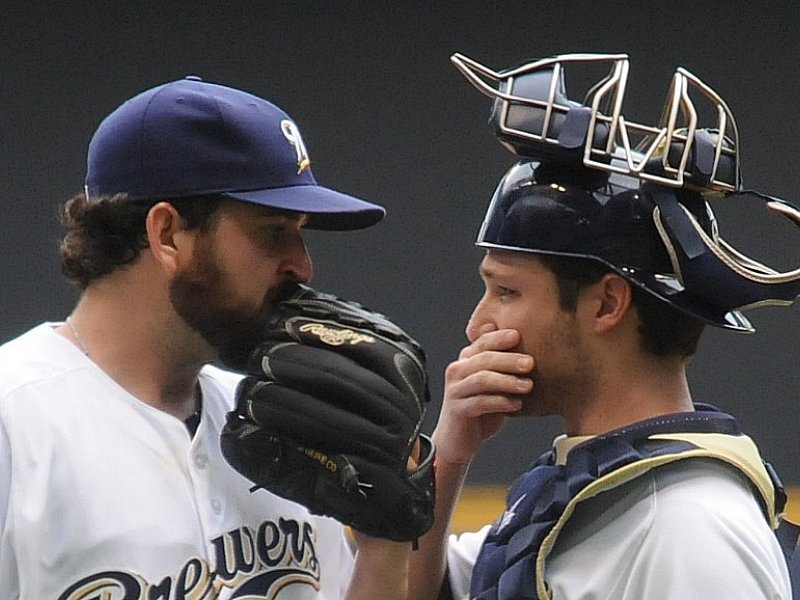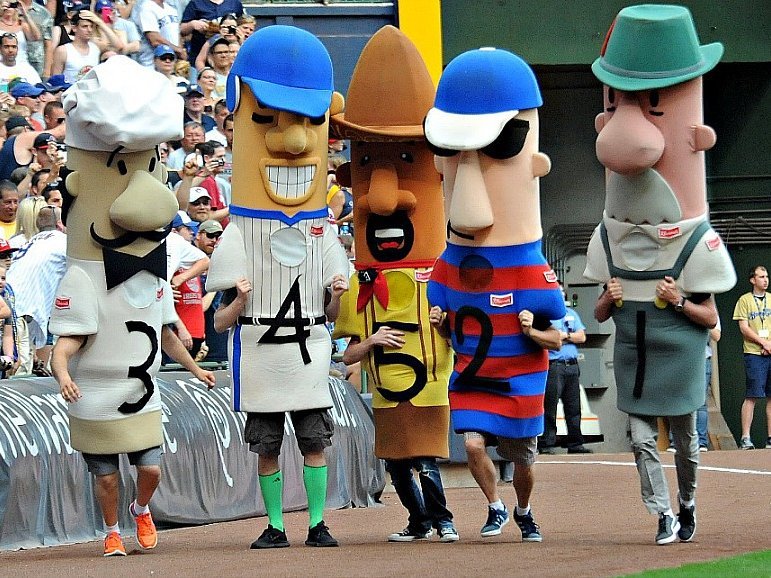No game played by humans can be broken down by computers more than baseball. Baseball is a contest determined by who scores more runs than the other, an outcome that is decided by 18 mammals who are throwing, catching and hitting an inanimate sphere over a dirt and grass surface enclosed by measured boundaries.
Yet within such an organic setting come such stats called Rbat, RAA, waaWL%, SecA, boLI and Gact. And that’s just for the hitters.
Pitchers have RA9opp and RA9def to be measured by, along with PPFp, Ptn%, PitchR, LevHi and a dozen others.
All of it is useful, and should be considered in some fashion.
Yet, the game always goes back to the man with the ball. None of the math matters until he agrees on the sign put down by another man, grips the ball, and throws it. With all those numbers floating around the game, it’s easy to forget what comfort means in the total equation.
And there is no greater comfort zone that factors into the outcome of a game than the one that must exist between a pitcher and a catcher.
"It’s hard to say how big of a role that it played into really, the total game," Milwaukee Brewers manager Ron Roenicke said of the pitcher-catcher relationship. "That’s a hard question for us because when we try to match up certain catchers with pitchers, we try to figure out what the importance is."
As a manager, Roenicke formulates a day-to-day game plan with his coaching staff, and wants to run his best lineup – a decision that often factors in much of the numerical information the game affords. But, when it comes to what catcher he should run out with a certain pitcher, the math becomes fuzzy.
"Whenever we sit ‘Luc’ against a left handed starter, we don’t feel good about doing that just because he kills lefties," Roenicke said. "So we really have to weigh that. What is that difference there? I think when a pitching is pitching well and he’s on a roll, it doesn’t matter as much. But trying to get them to get into that role, if (Peralta’s) going to be more comfortable with Maldy or if Lohse is going to be more comfortable with Luc, then we try to do those things."
Yovani Gallardo has thrown to over a half dozen catchers in his career and while he said he never once went to a manager to request to throw to one particular receiver – "It’s about putting the best team on the field" – he acknowledged he has shared better chemistry with some over others.
"It’s kind of hard to explain," Gallardo said. "If you have a guy catching you consistently and you seem to be right on the same page, one of those things whether it be calling the game or a certain pitch in a certain situation. It just makes the game faster."
"It’s instincts, really," added Donovan Hand. "That’s the best way to put it for me. It’s instincts between the catcher and the pitcher. Just getting familiar. Sometimes you’re not comfortable and the more comfort you can have out there, the better the success."
For both pitcher and catcher, open lines of communication before and during the game is what develops that comfort level.
"It’s just a matter of being on the same page," Lucroy said. "I don’t think there’s a way of quantifying it. It’s more along the lines of being comfortable with a guy. The language barrier is a big issue. You see that with Maldonado and Peralta. They can communicate. That’s an issue when you’ve got to be able to go out and talk to a guy, tell him what you want, what you need and what you think. If the guy can’t understand you, obviously it’s a factor. With us, I think it’s just being able to communicate, tell a guy what you see, even non-verbal stuff, like keep your elbow up, slow down, stuff like that. There’s just a lot of little things."
Peralta agreed.
"I just listen to him," he said of Maldonado. "He says ‘Calm down, try to execute the pitches’ and I just follow him."
That communication then allows the catcher to know his pitcher, and is able to put his entire body of work into play while also factoring in what kind of stuff he has that particular day.
"He knows what you want to do and what you can do," Hand explained. "That’s the main thing. What you’re feeling that day. With Maldy and Luc, they’ve got to know what you have that day and what you don’t, what you can do and what you can’t do. If you can’t throw the ball up in the zone, you’re not going to throw it up the zone. You get more familiarity, more comfort with certain catcher and they see you too.
"They may do something …. Like you throw a pitch and they’re like, oh, he missed here, let’s go here to get him back to that pitch there. That’s complicated, but that’s kind of the whole picture of it. It’s more than what the eye meets."
Jim Owczarski is an award-winning sports journalist and comes to Milwaukee by way of the Chicago Sun-Times Media Network.
A three-year Wisconsin resident who has considered Milwaukee a second home for the better part of seven years, he brings to the market experience covering nearly all major and college sports.
To this point in his career, he has been awarded six national Associated Press Sports Editors awards for investigative reporting, feature writing, breaking news and projects. He is also a four-time nominee for the prestigious Peter J. Lisagor Awards for Exemplary Journalism, presented by the Chicago Headline Club, and is a two-time winner for Best Sports Story. He has also won numerous other Illinois Press Association, Illinois Associated Press and Northern Illinois Newspaper Association awards.
Jim's career started in earnest as a North Central College (Naperville, Ill.) senior in 2002 when he received a Richter Fellowship to cover the Chicago White Sox in spring training. He was hired by the Naperville Sun in 2003 and moved on to the Aurora Beacon News in 2007 before joining OnMilwaukee.com.
In that time, he has covered the events, news and personalities that make up the PGA Tour, LPGA Tour, Major League Baseball, the National Football League, the National Hockey League, NCAA football, baseball and men's and women's basketball as well as boxing, mixed martial arts and various U.S. Olympic teams.
Golf aficionados who venture into Illinois have also read Jim in GOLF Chicago Magazine as well as the Chicago District Golfer and Illinois Golfer magazines.




.jpg)


